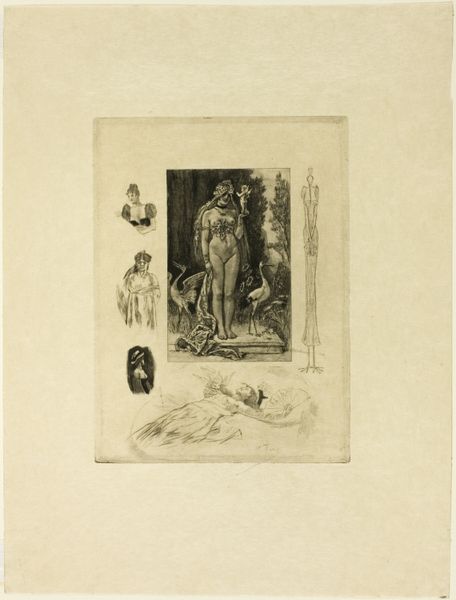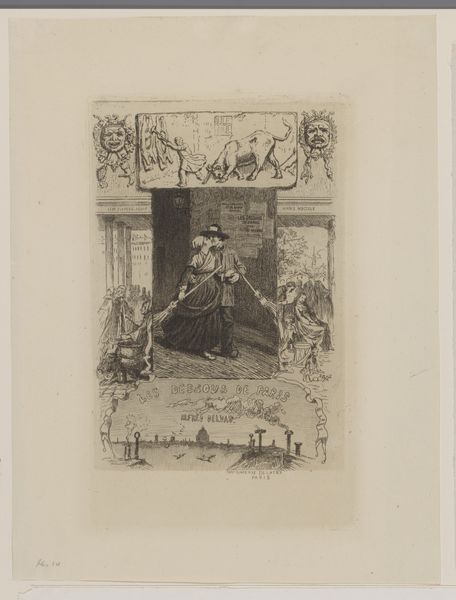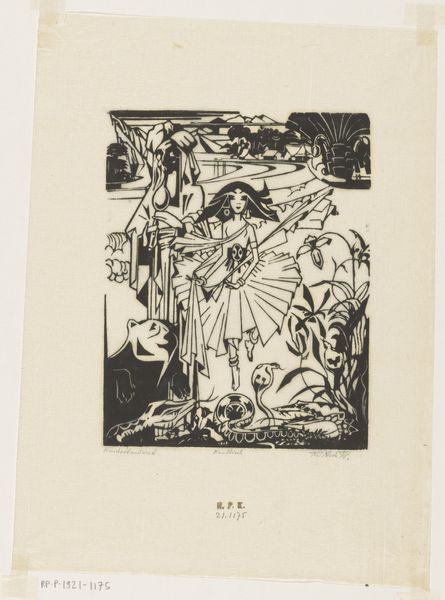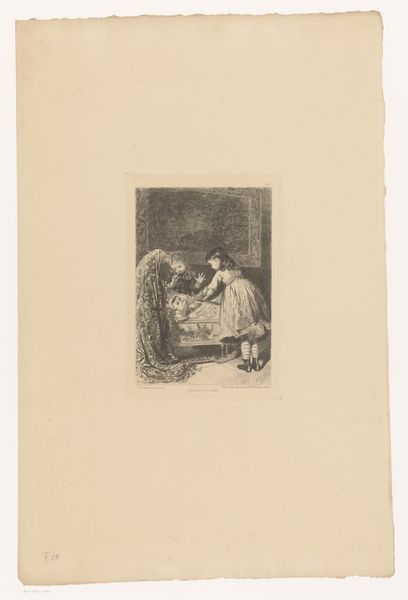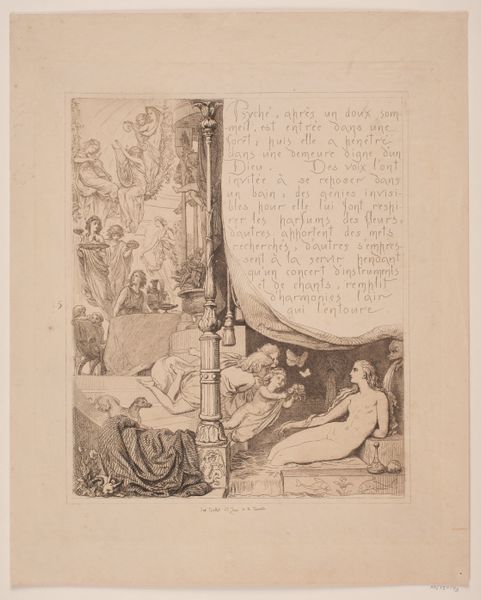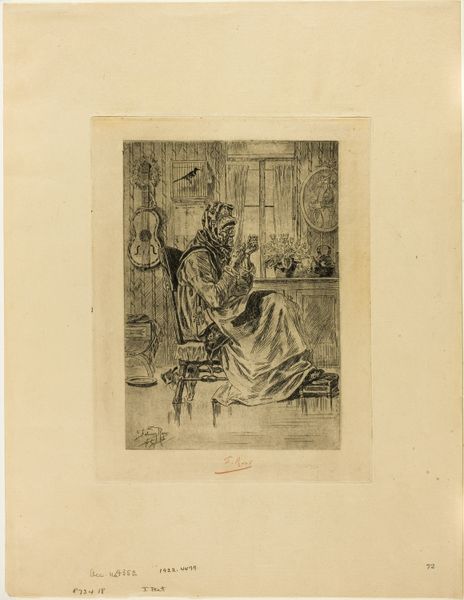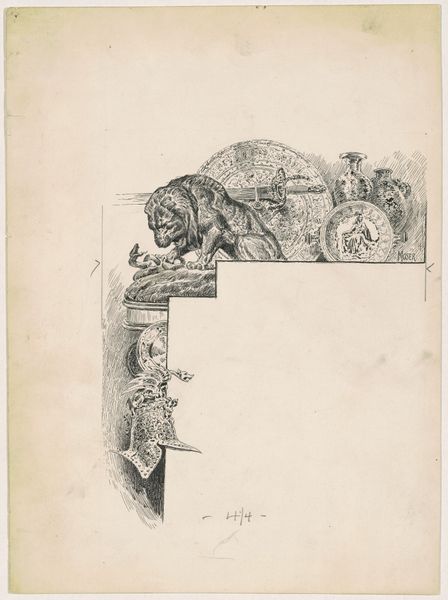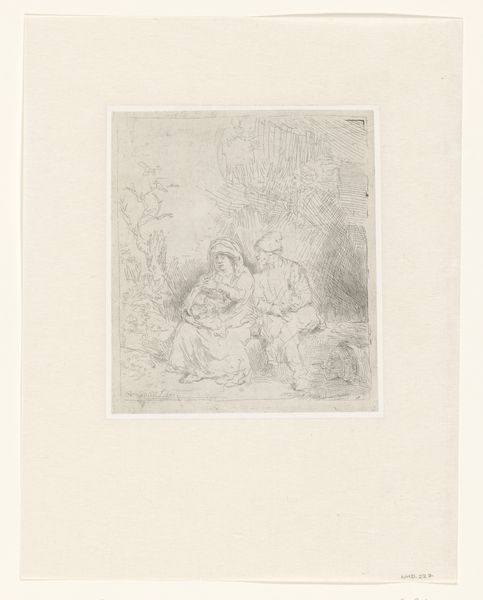
drawing, print, ink, engraving
#
drawing
#
ink drawing
#
medieval
#
narrative-art
# print
#
figuration
#
ink
#
engraving
Dimensions: 334 mm (height) x 243 mm (width) (bladmaal)
Curator: This compelling print, rendered in ink, is titled "Christ Leads the Thief into Paradise," created between 1910 and 1915 by Waldemar Böhme. It's currently held at the SMK, the National Gallery of Denmark. Editor: My immediate impression is one of stark contrast. The monochrome palette emphasizes the graphic nature of the composition. The bold lines and intricate detail create a very clear visual hierarchy, dividing the narrative elements distinctly. Curator: Yes, let’s consider the narrative itself. This work powerfully recontextualizes ideas about faith and redemption. Böhme challenges us to reckon with the concept of divine mercy extended to someone who, within secular justice systems, would be deemed irredeemable. Editor: Note the symmetry and asymmetry within the frame itself, the two different vignettes; it provides a formal echo of the binary suggested in the scene. Christ’s robe and gesture create a kind of vector pointing down and to the kneeling figure; a beautiful articulation. Curator: The work speaks to broader discussions around class, privilege, and social mobility. By placing Christ in a moment of grace toward a thief, the artist interrogates the viewer's assumptions about morality. How do systems of power and access influence our perception of individuals, especially in a society rife with inequities? Editor: The choice of line is very interesting. See how Böhme varies the thickness and density of the lines to suggest form and depth? He uses hatching and cross-hatching to create shading. Curator: And what is also fascinating is how, during this period, early 20th-century Europe was undergoing vast political and social upheaval, as class disparities sharpened the rise of revolutionary ideas. In this climate, how do artists begin exploring notions of justice and compassion? How do works like this intersect with socialist and anarchist critiques of institutionalized religion and power? Editor: On closer look, the angel bears witness as an important structural element. The way in which that figure creates weight and visual balance speaks to Böhme's astute use of visual language and compositional techniques. Curator: I think by examining pieces such as "Christ Leads the Thief into Paradise," we can challenge deeply held biases. The narrative of the work implores us to embrace perspectives beyond mainstream narratives. Editor: Absolutely. And in examining Böhme's mastery of form, we witness the seamless interplay of line, composition, and narrative.
Comments
No comments
Be the first to comment and join the conversation on the ultimate creative platform.


